T J L C Bakx
A novel high-z submm galaxy efficient line survey in ALMA bands 3 through 8 - an ANGELS pilot
Bakx, T J L C; Amvrosiadis, A; Bendo, G J; Algera, H S B; Serjeant, S; Bonavera, L; Borsato, E; Chen, X; Cox, P; González-Nuevo, J; Hagimoto, M; Harrington, K C; Ivison, R J; Kamieneski, P; Marchetti, L; Riechers, D A; Tsukui, T; van der Werf, P P; Yang, C; Zavala, J A; Andreani, P; Berta, S; Cooray, A R; De Zotti, G; Eales, S; Ikeda, R; Knudsen, K K; Mitsuhashi, I; Negrello, M; Neri, R; Omont, A; Scott, D; Tamura, Y; Temi, P; Urquhart, S A
Authors
Aristeidis Amvrosiadis aristeidis.amvrosiadis@durham.ac.uk
Post Doctoral Research Associate
G J Bendo
H S B Algera
S Serjeant
L Bonavera
E Borsato
X Chen
P Cox
J González-Nuevo
M Hagimoto
K C Harrington
R J Ivison
P Kamieneski
L Marchetti
D A Riechers
T Tsukui
P P van der Werf
C Yang
J A Zavala
P Andreani
S Berta
A R Cooray
G De Zotti
S Eales
R Ikeda
K K Knudsen
I Mitsuhashi
M Negrello
R Neri
A Omont
D Scott
Y Tamura
P Temi
S A Urquhart
Abstract
We use the Atacama Large sub/Millimetre Array (ALMA) to efficiently observe spectral lines across Bands 3, 4, 5, 6, 7, and 8 at high-resolution (0.″5 – 0.″1) for 16 bright southern Herschel sources at 1.5 < z < 4.2. With only six and a half hours of observations, we reveal 66 spectral lines in 17 galaxies. These observations detect emission from CO (3–2) to CO(18–17), as well as atomic ([C i](1-0), (2-1), [O i] 145 μm and [N ii] 205 μm) lines. Additional molecular lines are seen in emission (H2O and H2O+) and absorption (OH+ and CH+). The morphologies based on dust continuum ranges from extended sources to strong lensed galaxies with magnifications between 2 and 30. CO line transitions indicate a diverse set of excitation conditions with a fraction of the sources (∼35 per cent) showcasing dense, warm gas. The resolved gas to star-formation surface densities vary strongly per source, and suggest that the observed diversity of dusty star-forming galaxies could be a combination of lensed, compact dusty starbursts and extended, potentially-merging galaxies. The predicted gas depletion timescales are consistent with 100 Myr to 1 Gyr, but require efficient fueling from the extended gas reservoirs onto the more central starbursts, referee in line with the Doppler-shifted absorption lines that indicate inflowing gas for two out of six sources. This pilot paper explores a successful new method of observing spectral lines in large samples of galaxies, supports future studies of larger samples, and finds that the efficiency of this new observational method will be further improved with the planned ALMA Wideband Sensitivity Upgrade.
Citation
Bakx, T. J. L. C., Amvrosiadis, A., Bendo, G. J., Algera, H. S. B., Serjeant, S., Bonavera, L., Borsato, E., Chen, X., Cox, P., González-Nuevo, J., Hagimoto, M., Harrington, K. C., Ivison, R. J., Kamieneski, P., Marchetti, L., Riechers, D. A., Tsukui, T., van der Werf, P. P., Yang, C., Zavala, J. A., …Urquhart, S. A. (2024). A novel high-z submm galaxy efficient line survey in ALMA bands 3 through 8 - an ANGELS pilot. Monthly Notices of the Royal Astronomical Society, 535(2), 1533-1574. https://doi.org/10.1093/mnras/stae2409
| Journal Article Type | Article |
|---|---|
| Acceptance Date | Oct 21, 2024 |
| Online Publication Date | Oct 23, 2024 |
| Publication Date | 2024-12 |
| Deposit Date | Nov 15, 2024 |
| Publicly Available Date | Nov 15, 2024 |
| Journal | Monthly Notices of the Royal Astronomical Society |
| Print ISSN | 0035-8711 |
| Electronic ISSN | 1365-2966 |
| Publisher | Royal Astronomical Society |
| Peer Reviewed | Peer Reviewed |
| Volume | 535 |
| Issue | 2 |
| Pages | 1533-1574 |
| DOI | https://doi.org/10.1093/mnras/stae2409 |
| Public URL | https://durham-repository.worktribe.com/output/3088977 |
Files
Published Journal Article
(19.1 Mb)
PDF
Publisher Licence URL
http://creativecommons.org/licenses/by/4.0/
You might also like
FLASH: Faint Lenses from Associated Selection with Herschel
(2023)
Journal Article
Abell 1201: detection of an ultramassive black hole in a strong gravitational lens
(2023)
Journal Article
Downloadable Citations
About Durham Research Online (DRO)
Administrator e-mail: dro.admin@durham.ac.uk
This application uses the following open-source libraries:
SheetJS Community Edition
Apache License Version 2.0 (http://www.apache.org/licenses/)
PDF.js
Apache License Version 2.0 (http://www.apache.org/licenses/)
Font Awesome
SIL OFL 1.1 (http://scripts.sil.org/OFL)
MIT License (http://opensource.org/licenses/mit-license.html)
CC BY 3.0 ( http://creativecommons.org/licenses/by/3.0/)
Powered by Worktribe © 2025
Advanced Search
